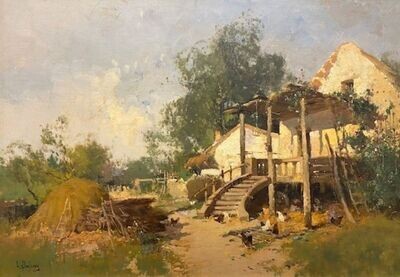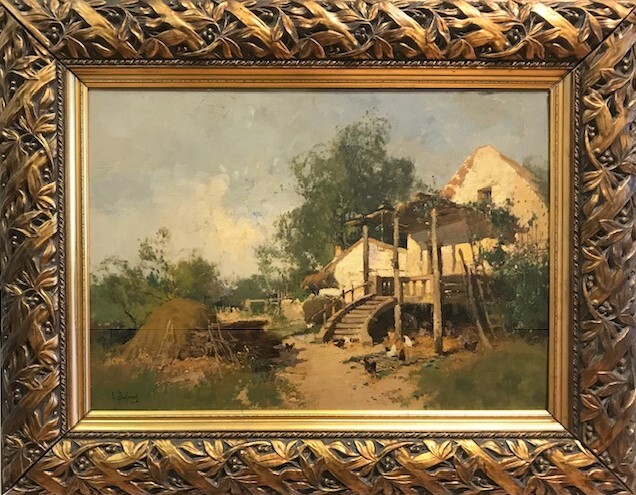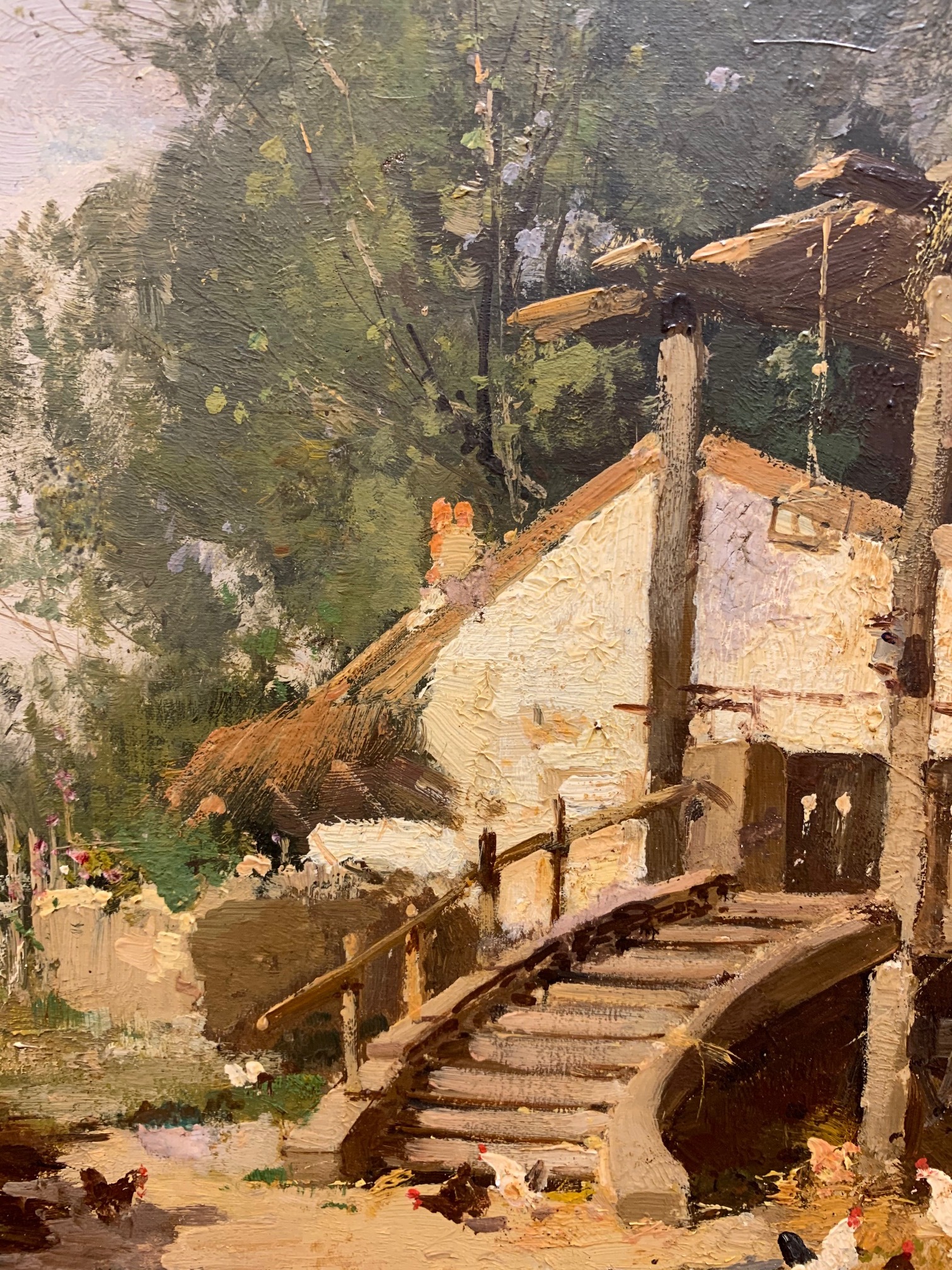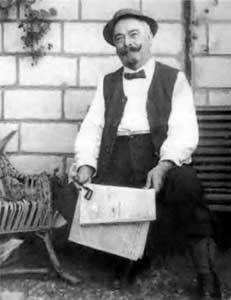00005

Artist: Eugene Galien Lalou
Title: Country House Along the Seine
Nationality: French
Medium: Oil on Panel
Dimensions: 24" x 36"
This painting is wonderfully rendered with a classic impressionist appeal. The scene depicts a northern French country house with chickens playfully surrounding the cottages front entrance.
Eugene Galien Laloue, a French painter specializing in the depiction of bustling city life, the artist is credited as being instrumental in popularizing street scene painting. Best known for his Impressionist autumnal street scenes, his works often feature prominent Parisian landmarks and their surrounding milieu providing historical insight into pre-20th Century Parisian life. Born in Paris in 1854, he made his debut in 1877 at the Salon des Artistes Français, where he continued to show works throughout the rest of his career. Galien-Laloue died in Chérence, France in 1941. Country House Along the Seine depicts a sunny morning in a humble abode where the serenity of country life lurks just outside the bustle of the city. Soft colors and warming light imbue this oil on board. Eugene Galien-Laloue (1854-1941) French artist painter specializing in the depiction of bustling city life.
Born to French-Italian parents, he lived and spent most of his life in Montmartre, an authentic village on a hill in Paris, part of the Right Bank in the northern section of the city. His father was a Parisian theater set designer so this artist of many names had his first training in architecture. Studying under his father, Charles Laloue, led him to change his name his name from Eugene Galiany to Galien-Laloue as a tribute to him although on his birth certificate in the city of Montmartre, Gallien (with two “ls”) is listed as his second name. This architectural training helped him with popularizing the subject matter of Parisian street scenes as well as very natural rural landscapes.
His birth year was an exciting time when Paris was being modernized and monumental changes were being made, the city’s layout changing beyond recognition during Laloue’s lifetime. His paintings are an accurate record of those fascinating changes.
Cameras of the time could not accurately record motion and were capturing scenes only in black and white, making Laloue’s paintings, in a sense, postcards for the public, highly prized by both tourists and the towns people.Being employed by the French Railway lines in 1874 when they needed an illustrator to travel and paint the new sections of the rail network, afforded Laloue an opportunity to travel to provinces particularly in Normandy and Siene-et-Marne.
Here he captured country scenes and landscapes such as the oil on board Country House Along the Seine, which was exhibited under the pseudonym Louis Dupuy. In stark contrast to his Paris street scenes, the morning sun bathes a farmhouse among the trees with chickens roaming free on the lawn and a haystack absorbing the light in the foreground. It captures the agrarian side of French country life amidst the turmoil of tearing down old houses and building wide boulevards in the cities. Another opportunity arose with his selection as a military illustrator when he captured the Franco-Prussian and WWI wars in watercolor. However, street scenes of life in Paris remained his favorite subject in spite of his sideline excursions.He made his exhibiting debut at the Salon des Artistes Francais in 1877. He had the advantage of the Impressionists by having his talents acknowledged by his contemporaries. He was popular and his paintings sold very well.
American and British collectors favored his work. Possibly due to contractual agreements, he worked under several pseudonyms such as J Lievin, E Gliany and L Dupuy.


